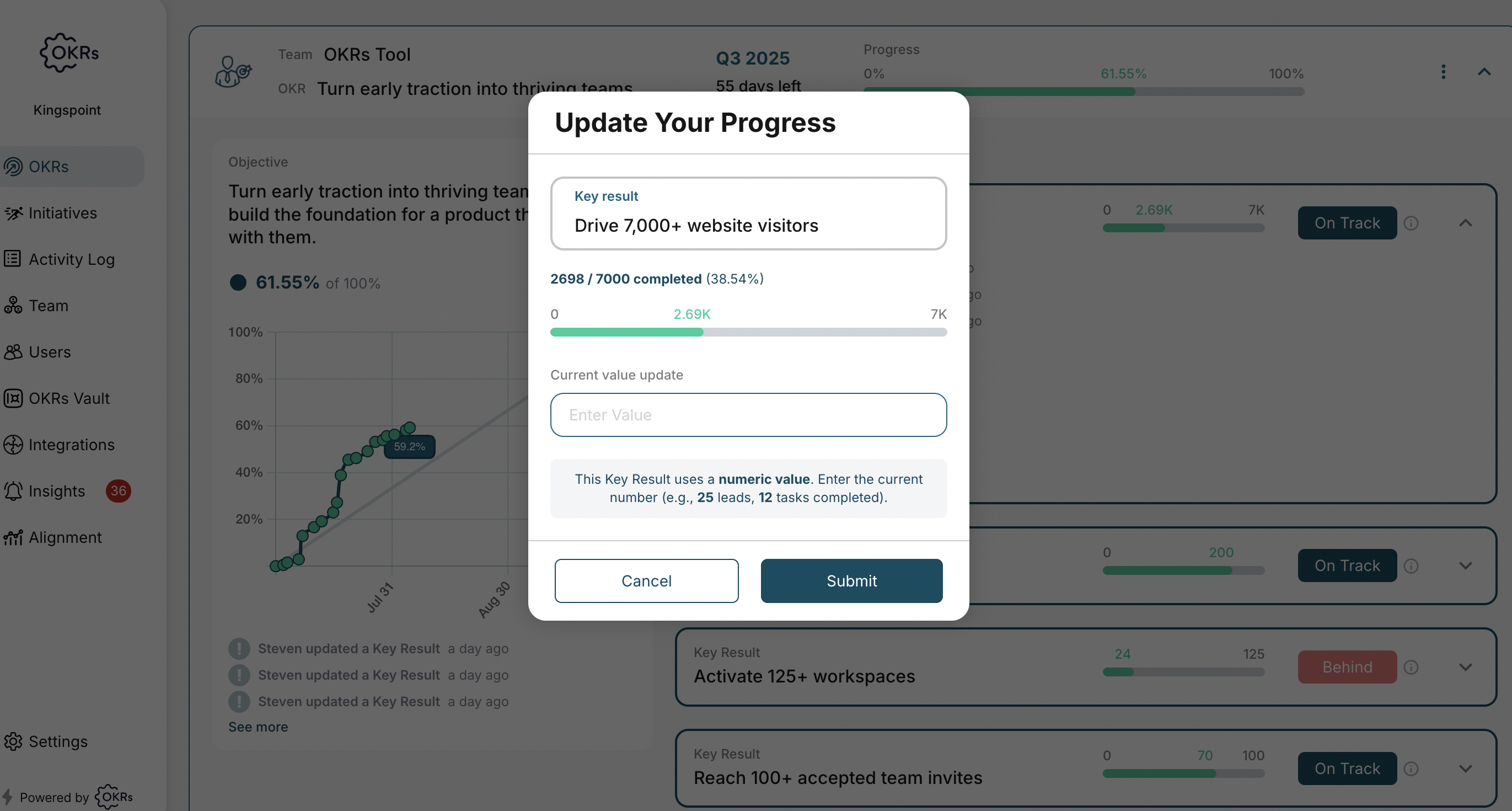More than 650+ companies have now created OKRs in OKRs Tool.
That’s 1,500+ objectives and 3,000+ key results logged in our OKR platform.
The good news? Founders are serious about setting goals.
The bad news? The quality is… mixed.
Most organizations still fall into the same trap: writing task-based goals that sound impressive but don’t measure actual progress.
A lot of “Launch new feature” and “Hire more people” - not enough “Did it make a difference?”
Here’s what the data shows, and five practical lessons to fix your own OKRs.
1. Measure Results, Not Tasks
Too many OKRs read like glorified task lists: “Ship new onboarding flow” or “Launch referral program.”
That’s activity, not progress. Launching a feature doesn’t matter if no one uses it. Hiring five people doesn’t matter if they don’t stay or perform.
Better goals measure outcomes. Example: “Increase trial-to-paid conversion from 12% → 20%.” Now you can tell whether your work moved the needle.
Tip: Make every goal measurable. Tie it to a number - adoption, revenue, retention, NPS. If there’s no way to say yes or no at the end of the quarter, it’s not a good goal.
2. Culture Goals Are Important - But Often Vague
Our data shows growth and product goals dominate. In third place? People and culture.
That’s a good sign - founders know culture matters. But the actual goals were often squishy: “Improve team happiness” or “Strengthen culture.” Noble intent, but impossible to track.
Better culture goals use simple, consistent metrics. eNPS. Retention. % of employees completing training. Even one clear signal is better than a dozen fuzzy ones.
Tip: Pick one culture metric and commit to tracking it every quarter. If your team knows how you measure progress, they’ll know how to improve it.
3. Customer Success Is the Missing Piece
You know who pays the bills? Customers.
Yet less than 3% of goals we reviewed mentioned customer success - things like NPS, churn, CSAT, or support response times. Instead, orgs chase growth and product launches while ignoring the experience of the people who actually buy.
It’s a red flag. Growth without loyalty doesn’t last.
Tip: Every company should have at least one customer-facing OKR. It could be NPS, churn, expansion revenue, or support responsiveness. Pick what matters most and make it visible.
4. Write Clear Goals (or They’ll Get Abandoned)
Half of all goals we reviewed fell into a dangerous middle ground:
neither clearly measurable outcomes nor simple tasks. Just vague statements.
These are the ones that get abandoned first. Ambiguity kills accountability.
Tip: Stress-test every goal with this question:
“By quarter’s end, can we say yes or no?”
If you can’t answer that, rewrite it until you can.
5. Check In Weekly
Here’s the harsh truth: the best-written goals won’t help if you never follow up.
Teams that reached their goals weren’t the ones with perfect OKRs on paper. They were the ones that updated them every single week.
Our 2026 OKR benchmark report backs this up: teams that check in weekly are 43% more likely to hit their goals.
Tip: Block 15 minutes once a week. Ask three simple questions:
- What’s going well?
- What’s blocked?
- What needs to change?
That’s it. Consistency beats complexity every time.

Quick Self-Audit: Are Your Goals on Track?
Want to know if your OKRs are healthy?
Run this quick 5-question audit against your current goals.
If you’re weak in more than two areas, don’t overcomplicate things. Pick one to improve this quarter and build from there
Closing the Loop: How to Write Stronger OKRs
After reviewing 1,500+ objectives and 3,000+ key results, the lesson is simple.
If you want goals that stick - and actually get hit - they need to be simple, measurable, customer-focused, and part of your weekly habits.
- Simple: Avoid vague statements.
- Measurable: Tie every goal to a number.
- Customer-focused: Don’t forget the people paying you.
- Part of your weekly habits: 15 minutes a week makes the difference.
Most founders don’t fail because they set no goals. They fail because they set the wrong kind, or they set them once and never revisit them. Don’t wait for the chaos to hit - start small, start measurable, and build the habit early.






